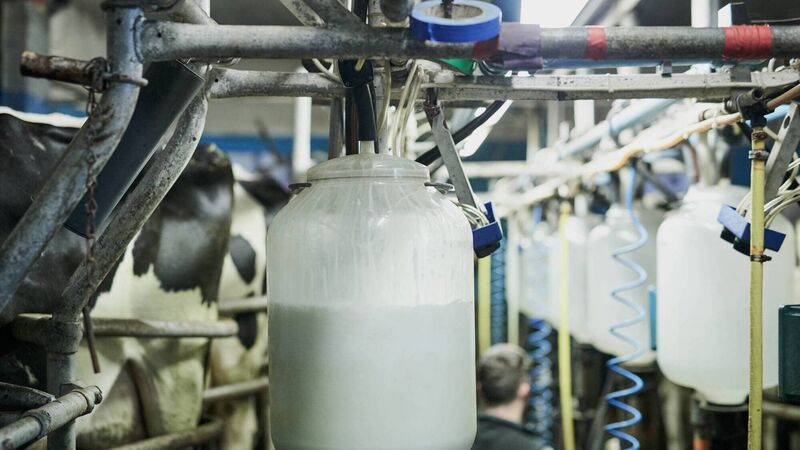A serious conversation needs to be had about protein supplementation in the Irish dairy herd

Testing each and every milk collection for milk urea needs to be made compulsory, as this is a measure of total protein fed and subsequent utilisation of that protein.
I have briefly mentioned it over the last month or so, but it really needs further discussion at this point and that is the whole restriction on feeding protein being imposed on dairy farmers.
Those in derogation recently had to declare what protein percentage meal/nut/ration they intended to feed to their cows from April to September. On the back of this some feed suppliers, but not all, have decided to impose these rules on all dairy farms, by declaring that they were not supplying dairy formulations above 15% protein to any producers. This smacks of wanting to be the best boys in class from a “sustainability” point of view.
Well, this policy has been a contributory factor in why the national milk supply is way behind in recent years. The drop in milk supply is multifactorial, but this issue has not helped. Grazed grass is currently exceptionally low in protein due to poor nitrogen uptake and poor growing conditions, meaning cows are deficient in dietary protein. Grass is currently low in sugar content meaning lower energy is being supplied to the cow too.
What frustrates me even more is that, if the will was there among the decision makers within the department, farm organisations and co-ops, the solution to the protein supplementation conundrum is staring them in the face. Put simply, testing each and every milk collection for milk urea needs to be made compulsory, as this is a measure of total protein fed and subsequent utilisation of that protein.
When a dairy cow consumes protein, it can be broken down to ammonia in the rumen, absorbed as amino acids and peptides in the small intestine, or excreted in the dung. Excess ammonia, however, is absorbed across the rumen wall and passes to the liver where it is converted to urea. Urea then can either be recycled back to the rumen through saliva or be excreted in the urine.
The important thing to know is that the amount and rate of carbohydrate digestion in the rumen are the primary regulators of microbial protein synthesis. In order to capture the ammonia, the rumen bacteria require an energy source, fermentable carbohydrates, in the form of starch and sugars. Therefore sufficient, but not excessive, amounts of fermentable carbohydrates must be provided for optimise rumen function and microbial synthesis.
Excretion of excess urea is an energy-requiring process since cows have to use more energy to excrete the excess urea through their urine. Excess concentrations of urea in the blood can affect milk production, reproductive efficiency, embryo survivability, immune function, and the environment.
It has been shown that there is a strong positive correlation between blood urea nitrogen and milk urea nitrogen.
MUN can be a useful tool when looking at a dairy diet and possible causes of low milk production and fertility.
Urea is an indicator of the balance of the rumen system, so excessive levels of MUN signal a red flag in a protein imbalance, a shortage of carbohydrates or a poor microbial environment in the rumen. Therefore, high levels of MUN may reduce milk production resulting in economic loss.
The first thing to check is milk production. If the dairy cows produce less milk than expected, excess protein consumption results in elevated MUN levels. This low milk production may be caused by diets with high MUN levels resulting from incorrect feeding management, too high degradable protein, or insufficient fermentable energy in the ration.
This scenario is generally the case in normal growth years in Ireland, where we see cows with loose dungs and high MUN.
If we look at what most herds are experiencing this year, it is obvious that we are seeing diets containing insufficient protein which are not supplying adequate amounts of ammonia for optimal rumen microbial synthesis resulting in low MUN levels.
Low protein feeds and low protein grass are meaning that low MUN figures below 18/20 are very common and are an indication that your cows are not getting enough protein from their diet. Lower milk yields are the ultimate result.
This brings me back to my earlier comment regarding protein feed restrictions being imposed on dairy producers. Why not make milk urea testing standard practice and instead of telling farmers what they can and can not feed their cows, monitor MUN and leave a herd feed what they need to in order to supply the correct nutrients to their cows, once they keep their average monthly MUN below a certain figure based on stocking rate and location etc….
This would allow producers to adjust feed and nitrogen fertiliser use on a regular basis, based on science and real-time information. If a farmer knows they are feeding too much protein, they can save money by reducing it and by the same token if they know insufficient protein is being fed, causing underperformance, then extra can be supplied to improve productivity.
MUN would be much easier to monitor and in my view is offering a carrot, instead of being beaten with a stick. Over to our researchers, the Department of Agriculture, farm organisations and co-ops, but I won't be holding my breath.













